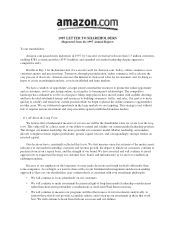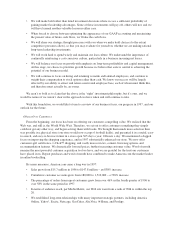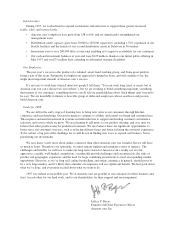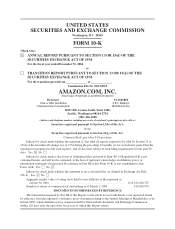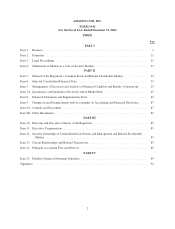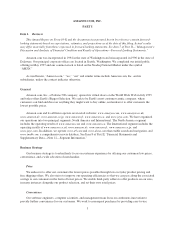Amazon.com 2004 Annual Report Download - page 16
Download and view the complete annual report
Please find page 16 of the 2004 Amazon.com annual report below. You can navigate through the pages in the report by either clicking on the pages listed below, or by using the keyword search tool below to find specific information within the annual report.As various Internet market segments obtain large, loyal customer bases, participants in those segments may
expand into the market segments in which we operate. In addition, new and expanded Web technologies may
further intensify the competitive nature of online retail. The nature of the Internet as an electronic marketplace
facilitates competitive entry and comparison shopping and renders it inherently more competitive than
conventional retailing formats. This increased competition may reduce our sales, operating profits, or both.
Our Expansion Will Place a Significant Strain on our Management, Operational and Financial Resources
We are rapidly and significantly expanding our operations both domestically and internationally and will
continue to expand further to pursue growth of our product and service offerings and customer base. Such
expansion increases the complexity of our business and places a significant strain on our management,
operations, technical performance, financial resources, and internal financial control and reporting functions, and
there can be no assurance that we will be able to manage it effectively. Our current and planned personnel,
systems, procedures, and controls may not be adequate to support and effectively manage our future operations,
especially as we employ personnel in multiple geographic locations. We may not be able to hire, train, retain,
motivate, and manage required personnel, which may limit our growth. If any of this were to occur, it could
damage our reputation, limit our growth, negatively affect our operating results and harm our business.
Our Expansion into New Product Areas and Geographic Regions Subjects Us to Business and Competitive
Risks
We do not expect to benefit in our newer market segments, whether products, services or new geographic
areas, from the first-to-market advantage that we experienced in the U.S. online book channel. Our gross profits
in our newer business activities may be lower than in our older business activities. In addition, we may have
limited or no experience in new product and service activities and new geographic areas, and our customers may
not favorably receive our new businesses. Our newer market segments may present special technology challenges
that we have not faced before. To the extent we pursue commercial agreements, acquisitions and/or strategic
alliances to facilitate new product or service activities or geographic expansion, the agreements, acquisitions and/
or alliances may not be successful. If any of this were to occur, it could damage our reputation, limit our growth,
negatively affect our operating results and harm our business.
We May Experience Significant Fluctuations in Our Operating Results and Rate of Growth
Due to our limited operating history, our evolving business model, and the unpredictability of our industry,
we may not be able to accurately forecast our rate of growth. We base our current and future expense levels and
our investment plans on estimates of future net sales and rate of growth. Our expenses and investments are to a
large extent fixed, and we may not be able to adjust our spending quickly enough if our net sales fall short of our
expectations.
Our revenue and operating profit growth depends on the continued growth of demand for the products
offered by us or our sellers, and our business is affected by general economic and business conditions throughout
the world. A softening of demand, whether caused by changes in consumer preferences or a weakening of the
U.S. or global economies, may result in decreased revenue or growth. Terrorist attacks and armed hostilities
create economic and consumer uncertainty that could adversely affect our revenue or growth. Such events could
create delays in, and increase the cost of, product shipments, which may decrease demand. Revenue growth may
not be sustainable and our company-wide percentage growth rate may decrease in the future.
Our net sales and operating results will also fluctuate for many other reasons, including:
•our ability to retain and increase sales to existing customers, attract new customers, and satisfy our
customers’ demands;
•our ability to expand our network of sellers, and to enter into, maintain, renew, and amend on favorable
terms our commercial agreements and strategic alliances;
8


